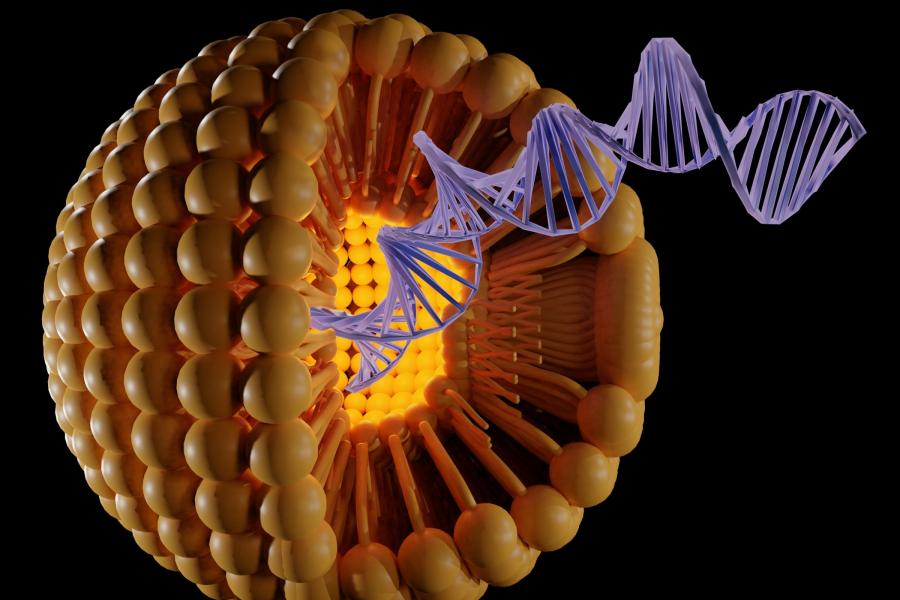The success of COVID-19 vaccines is a great example of gene medicine's tremendous potential to prevent viral infections. One reason for the vaccines' success is their use of lipid nanoparticles, or LNPs, to carry delicate messenger RNA to cells to generate and boost immunity. LNPs—tiny fat particles—have become increasingly popular as a carrier to deliver various gene-based medicines to cells, but their use is complicated because each LNP must be tailored specifically for the therapeutic payload it carries.
A team led by Hai-Quan Mao, a Johns Hopkins materials scientist, has created a platform that shows promise to speed up the LNP design process and make it more affordable. The new approach also can be adapted to other gene therapies.
"In a nutshell, what we have done is creating a method that screens lipid nanoparticle components and their proportions to quickly help identify and create the optimal design for use with various therapeutic genes," said Mao, director of the Institute for NanoBioTechnology at Johns Hopkins Whiting School of Engineering and professor in the departments of Materials Science and Engineering and Biomedical Engineering.
The team's study was published recently Nature Communications.
A crucial feature of effective treatments is how long a gene medicine lasts once it reaches the target cell. Unfortunately, the potency of mRNA begins declining within 24 hours of its delivery by LNPs. A promising alternative is plasmid DNA—a sturdier, double-stranded circular DNA that can last for up to seven days and thus has the potential to improve the treatment outcomes of metabolic diseases and infections affecting the liver, where the therapeutic duration is critical.
The lead author Yining Zhu, an INBT researcher and biomedical engineering PhD student, as well as a team of scientists from Johns Hopkins and the University of Washington, identified the best LNP design for pDNA delivery to liver cells in this work. Their platform screens LNPs step by step, addressing the physiological barriers an LNP encounters as it navigates the body to reach its target. The platform helped the team identify the most effective LNPs from a library of more than 1,000 combinations.
"This platform is versatile in that it is not merely limited to pDNA delivery, but can be easily extended to the development of LNPs for a wide range of therapeutic gene payloads, as well as alternative delivery routes such as oral, intramuscular injection, or inhalation method," said Zhu.
In collaboration with Sean Murphy, associate professor at the University of Washington, and his group, the researchers are now leveraging LNPs identified using the platform to develop a malaria vaccine that targets the disease-causing parasite during its lifecycle in the liver. This screening platform shows great promise to help accelerate other LNP product innovation to further push the bounds of gene medicine, vaccine development, and other novel therapeutics.
Posted in Health, Science+Technology
Tagged biomedical engineering, institute for nanobiotechnology, mrna








